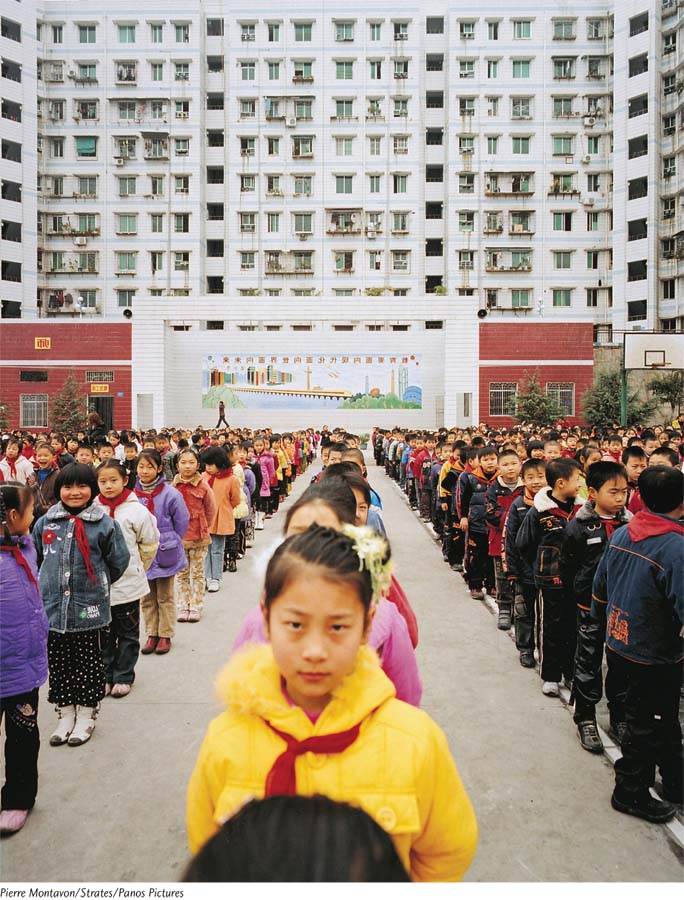Chapter Introduction
chapter 7
The Human Population

The Environmental Implications of China’s Growing Population
The Chinese are facing considerable environmental challenges as their affluence increases.
Human population size, affluence, and resource consumption all have interrelated impacts on the environment. The example of China is striking. With more than 1.3 billion people—
Sustainably managing the presence of humans on Earth requires addressing both population growth and resource consumption. China has already taken dramatic steps to limit its population growth. For many decades, China has had a “one-
China is one of only a few countries where government-
Population decline is only one part of the picture, however. Even if China’s population were to stop growing today, the country’s resource consumption would continue to increase as standards of living improve. Greater numbers of Chinese people are purchasing cars, home appliances, and other material goods that are common in Western nations. All of these products require resources to produce and use. Manufacturing a refrigerator requires mining and processing raw materials such as steel and copper, producing plastic from oil, and using large quantities of electricity. Having a refrigerator in the home increases daily electricity demand. All of these processes generate carbon dioxide, air and water pollution, and other waste products.
A look at a typical Chinese city street is evidence of the country’s growing affluence. Between 1985 and 2002, China’s population increased 30 percent, but the number of motor vehicles used in China grew by over 500 percent, from 3 million to 20 million. Today, China has over 50 million private cars on the road, and by 2020 the total will be 140 million, according to Chinese government estimates. China is already the second largest consumer of petroleum (after the United States), and concentrations of urban air pollutants, such as carbon monoxide and photochemical smog, are on the rise. In 2013, 7 of the 10 most polluted cities in the world were in China, according to an Asian Development Bank study.
There is some good news, however. China already has higher fuel efficiency standards for cars than does the United States, and it is quickly becoming a leader in the manufacturing of renewable energy technologies.
China’s influence on the environment is dramatic because of its size and its increasing industrial activity. However, increasing industrial activity is occurring in many other parts of the world as human populations and consumption increase. What will be the environmental impact of humans in 2020, and what can we do to reduce it?
Sources:H. Kan, B. Chen, and C. Hong, Health impact of outdoor air pollution in China: Current knowledge and future research needs, Environmental Health Perspectives 117 (2009): A187; Asian Development Bank, Toward an Environmentally Sustainable Future: Country Environmental Analysis of the People’s Republic of China, August 2012 Report.
Human population growth and associated resource consumption have large impacts on the environment. In 2014, Earth’s human population was 7.2 billion and increasing by 235,000 people per day. At the same time, people in many parts of the world are using more resources than ever before. Almost all aspects of environmental science are affected by the numbers of people on Earth and their activities. This chapter describes how human populations grow, what limits human population numbers, and the relative impacts of human population size and human consumption behavior.